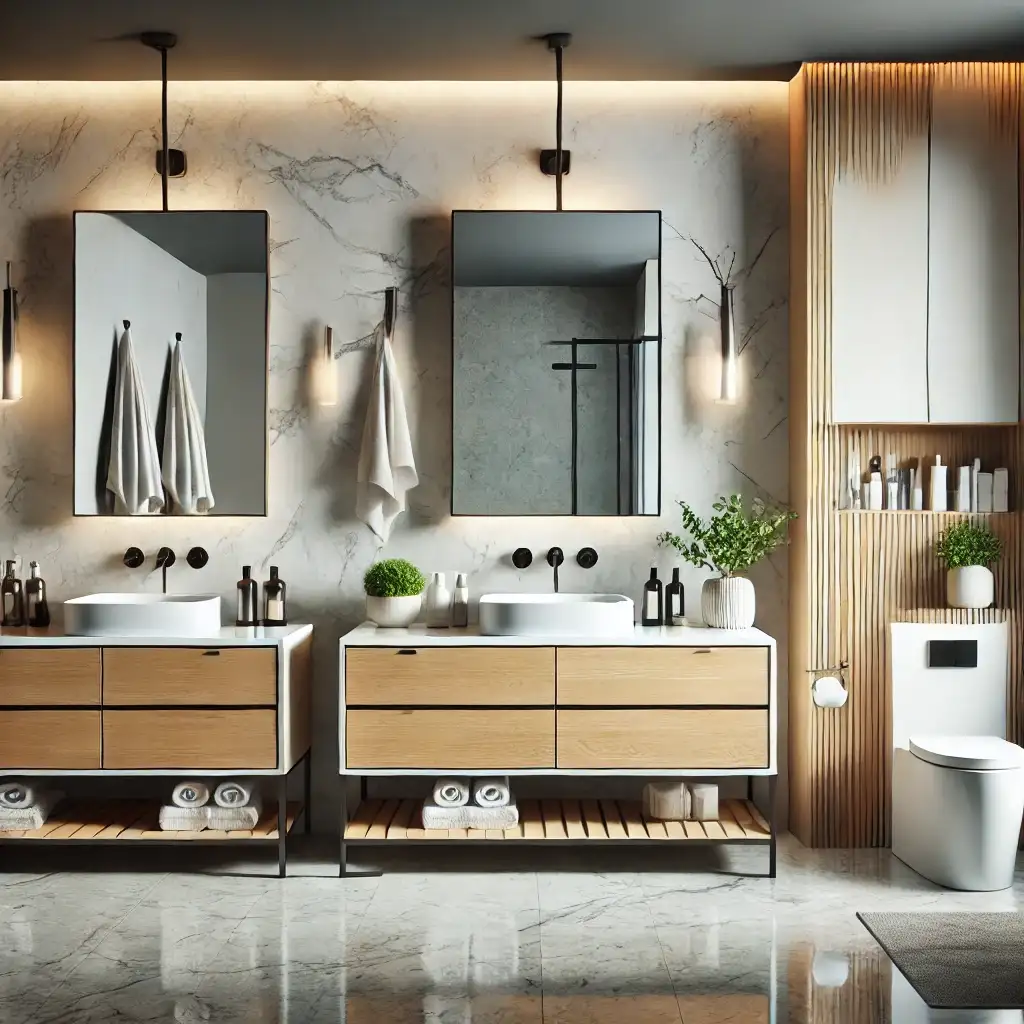Introduction: Choosing the right bathroom vanity is more than just picking a stylish piece. It’s about finding a balance between functionality, design, and space considerations. Whether you’re starting from scratch or upgrading your current bathroom, this guide will help you navigate the many options and find the perfect vanity for your home.

Step 1: Measure Your Space
Before diving into styles and finishes, the first step is to measure your bathroom. Knowing the exact dimensions will help narrow down your options and ensure your new vanity fits perfectly. Measure the width, depth, and height of the available space, taking into account doors, drawers, and any existing fixtures like your toilet or shower. Don’t forget to account for the space needed to move around comfortably.
Step 2: Consider Your Storage Needs
A bathroom vanity is not just about looks—it’s also about storage. Think about what you need to store in your bathroom. Do you need deep drawers for hairdryers and towels, or are you looking for smaller compartments to organize toiletries? If storage is a priority, look for vanities with multiple drawers, shelves, or even customized storage solutions.
Step 3: Choose Your Vanity Style
Vanity styles range from traditional to modern, and choosing the right one will depend on your bathroom’s overall design and your personal taste. Here are a few popular styles:
- Freestanding Vanities: These are versatile and work well in most bathrooms. They offer a classic look and usually come with ample storage.
- Wall-Mounted Vanities: Perfect for modern or minimalist designs, these vanities create a sleek, open feel and make small bathrooms appear larger.
- Floating Vanities: Similar to wall-mounted styles, these provide a contemporary look and leave space underneath, which can be used for extra storage or simply to create an airy atmosphere.
Step 4: Select the Right Material and Finish
The material and finish of your vanity play a significant role in its durability and maintenance. Here are some common materials:
- Solid Wood: Known for its durability and classic appeal, solid wood is a popular choice. However, it requires regular maintenance to prevent moisture damage.
- MDF (Medium Density Fiberboard): A more budget-friendly option, MDF is durable and comes in a variety of finishes, including wood veneers and laminates.
- Metal: For a modern, industrial look, metal vanities are durable and easy to clean, though they might be prone to rust if not properly maintained.
As for finishes, think about the overall aesthetic of your bathroom. A glossy finish might add a modern touch, while a matte finish offers a more understated, classic look.
Step 5: Choose the Right Countertop
Your vanity’s countertop is another important decision. It should complement the style of your vanity while offering durability and ease of maintenance. Here are a few popular options:
- Marble: Luxurious and timeless, marble countertops add elegance to any bathroom. However, they require regular sealing to prevent staining.
- Granite: Known for its durability, granite is resistant to heat and scratches, making it a practical choice for busy bathrooms.
- Quartz: A low-maintenance option, quartz is non-porous, which makes it resistant to stains and bacteria, ideal for bathroom use.
Step 6: Pick the Right Sink
The sink is a focal point of your vanity, so choosing the right one is crucial. Here are a few types to consider:
- Undermount Sinks: These are installed under the countertop, creating a seamless look that’s easy to clean.
- Vessel Sinks: A stylish option, vessel sinks sit on top of the countertop and can serve as a statement piece.
- Integrated Sinks: These sinks are built into the countertop, offering a sleek, modern appearance with fewer seams and joints.
Step 7: Don’t Forget About Hardware
The hardware on your vanity, including handles and faucets, can enhance its overall look. Consider coordinating your hardware with other fixtures in the bathroom, such as the showerhead and towel bars, for a cohesive design. Popular finishes include chrome, brushed nickel, and matte black, each offering a different vibe.
Step 8: Think About Installation
Finally, consider the installation process. Some vanities are easy to install as a DIY project, while others might require professional help, especially if plumbing needs to be adjusted. Additionally, you might consider finding a local bathroom contractor for professional installation.
Conclusion: Choosing the right bathroom vanity is a key element in designing your ideal bathroom. By considering your space, storage needs, style preferences, and material options, you can find a vanity that not only enhances your bathroom’s look but also meets your functional needs.



